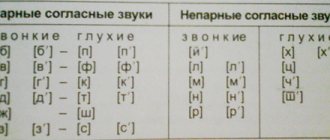Timing and duration of speech therapy sessions. How to save money.
1. In the budget (kindergartens, clinics) there are standards of 15-30 minutes per lesson with a child (depending on the age of the child and the type of lesson - individual or group). Refer to SanPin standards. 20-30 years ago, SanPin standards for speech therapy classes were one and a half to two times higher. This is due to “optimization”, i.e. saving budget funds, this affected speech therapists earlier than doctors and teachers. Speech therapists were also made redundant, the number of children in the group was increased, and, naturally, the time allotted for one child was reduced. (What is happening now with doctors’ appointments).
2. Perhaps the issue of time for speech therapy sessions needs to be considered from the point of view of terminology. There are the concepts of “speech therapy exercise”, “speech therapy lesson”, “consultation”, “homework”, “work with parents”, “speech therapy (also known as “corrective”) work”, exercises (for example, the development of HMF) with a low speech load , promoting better assimilation of speech therapy material; speech work of parents at home with children; establishing contact with the child... Therefore, a speech therapy session can last 5 minutes if it includes only one exercise, or maybe an hour if it consists of several of the above elements.
3. Supporters of short speech therapy sessions have another argument: they refer to the child’s health. That the child cannot sit through a lesson for so long, and that it is difficult for the articulatory apparatus to be under constant speech load, that the child does not have enough attention...
Arguments refuting these arguments:
a) sitting still is harmful for both children and adults. Therefore, it is completely normal when a child moves continuously during class, no one limits him. In one lesson we have time to sit on a chair, on a sofa, on a potty, and then “they carry me in their arms” (or rather a tablet) to the kitchen or under the table, or to roll cars on the floor. The main thing is that there should be a result. I am not a supporter of multiple and monotonous repetitions. Even an adult cannot repeat the same thing for more than 5 minutes. Therefore, experienced speech therapists have a lot of manuals, methods and techniques to diversify speech therapy work so that the child does not get tired.
b) Regarding fatigue of the articulatory apparatus. The organs of the peripheral articulatory apparatus are made up of muscles, and these muscles are small. Of course, they get tired quite quickly from repeated monotonous movements. But for some reason the same language does not get tired of “talking” for several hours. The fact is that the muscle gets tired of performing one movement. Change the movement (say a different sound or word) - and there will be no fatigue. We perform the same type of movements in speech therapy classes only during articulatory gymnastics. Therefore, for each exercise the number of movements is indicated - somewhere 5-7 times, somewhere 2-3. But not a single speech therapy session consists only of articulatory gymnastics.
c) I would say that the brain gets tired most of all during classes. What the psychologists cited by SanPin say: after 5 minutes, concentration, stability, and switchability decrease. But let's be honest - after 5 minutes of doing the same test, any person will lose concentration. At the same time, seven-year-old children in first grade spend 40 minutes in each lesson. It’s just that not a single teacher (or speech therapist) will do one exercise with a child for half an hour. In classes with an experienced private speech therapist, several topics are studied with 1-2 exercises in each topic, as we were taught in institutes 20-30 years ago. At the same time, the child does not lose concentration.
d) working with parents takes from 10 to 30 minutes in each lesson. In order for the child and mother to consolidate what they have learned every day, it is necessary for the mother to understand everything about what and how to do. Budgetary organizations do not provide for work with parents, so this time is not included in their speech therapy sessions.
d) you also need to take into account the time it takes to include the child in the lesson process. Sometimes it takes 15 minutes at the beginning of the lesson for the child to get ready and start studying.
f) According to my observations, if we follow the path of simplifying and reducing the time of the lesson, taking into account the current capabilities of the child, then over time we get that even a six-year-old child “gets tired” of studying after 5 minutes. On the contrary, gradually increasing the time spent working with the child (involving him in the process through games and interesting tasks), in a couple of months the lesson time was increased to 40 minutes with a 3-year-old child. I strongly recommend that all parents take away phones and tablets from their children, turn off cartoons on TV and on the Internet, as this generally reduces the child’s attention and perception.
4. Besides me, with my work experience and observations, there are other professional speech therapists. And if you look at trends on the Internet, experienced speech therapists often run classes for 45-60 minutes,
Previously, I conducted both 30-minute and 60-minute classes. Based on available statistics, it turns out that, regardless of age and type of speech disorder, the time until complete recovery with half-hour classes increases by 5-10 times. Those. even correction of sound pronunciation with hour-long lessons occurs in 2-3 months, with half-hour lessons - a year. I assume that most experienced professionals have conducted the same statistics.




